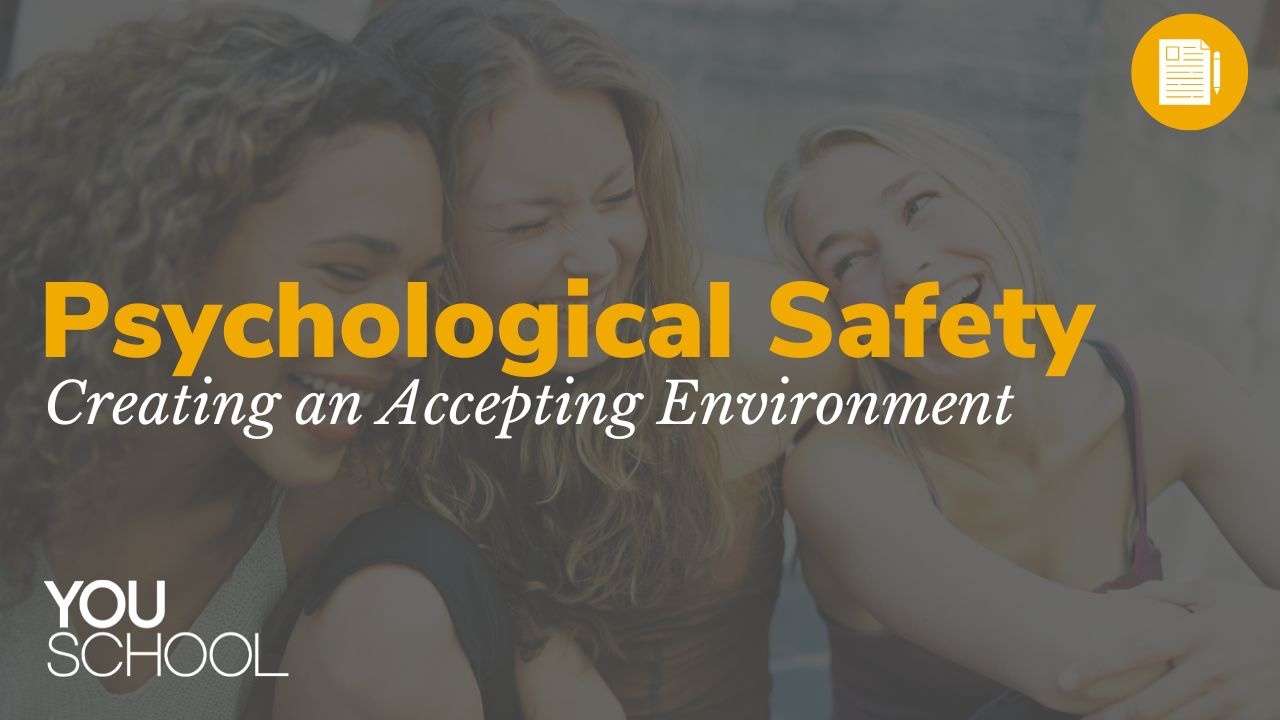Psychological Safety—Creating An Accepting Environment

One of the best parts of the television show, The Office (US version), is the ridiculously colorful characters. They all work for a paper company in Scranton, but after that, they have nothing in common. (Please, if you have fifteen minutes to waste, do yourself a favor and read through Dwight’s Dunderpedia page.)
Ultimately, the show's beauty is how all the characters accept each other despite their differences. Every episode of the nine seasons explores the friction between quirky people who seemingly can’t help but be themselves. Despite the antics and the miserably boring industry (no offense to the paper companies of the world!), we all long to work at a place like Dunder Mifflin.
Really, what we’re talking about is creating an environment where people feel comfortable being themselves, a foundational ingredient to PSYCHOLOGICAL SAFETY.
Every kid (and adult) has an innate need to be seen, known, and accepted. We all long to be accepted and appreciated for our differences, too.
Without psychological safety amongst peers, the crucial task of identity formation throughout adolescence will be stunted. (Just think: have you ever met a grown-up who obviously still aches for acceptance?)
What can parents or educators do to encourage every kid to feel comfortable being themselves?
- Start with your own disclosures: sure, teenagers think adults are lame. But they also look to adults to set the tone. If you can share your unique personality traits, interests, or quirks confidently, you’ll be modeling for them how they can own their own uniqueness, too.
- Name and celebrate the differences you see: teenagers, by and large, are going to extensive lengths to fit in. Even for the ones who dress ‘strangely,’ look around—chances are you’ll find a group of kids who dress just like them. Regardless, there’s certainly a norm of what’s acceptable or not. So, when you see a kid breaking the mold, either with an opinion or taking a risk in their wardrobe, name it and celebrate it. Look them in the eye loud enough for everyone to hear, and let them know how cool you think it is for them to be courageously themselves.
- State the obvious: at the risk of redundancy, parents, and educators need to state the truth. Everyone is different, even if they look the same. The more you state the obvious, model it with your own examples, and celebrate kids marching to their own beat, the deeper the healthy truth will stick in their brains.
Brene Brown was right: vulnerability wins the day. But what’s an appropriate vulnerability amongst teens?
Stay tuned...
P.S. What if there was a way to get the best resources to impact the kids in your life—delivered to you at the right time?
Check out our memberships for parents and educators.

